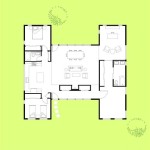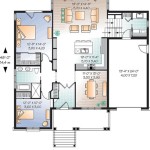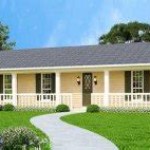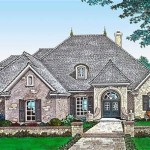The House Plans, a comprehensive set of blueprints and specifications, provides detailed instructions for the construction or renovation of a building. These plans serve as a guide for architects, engineers, and contractors, ensuring the safe and efficient execution of the project.
House plans are particularly essential for residential construction, where they define the layout, room dimensions, and overall design of a home. For instance, the blueprints may specify the number of bedrooms, bathrooms, and living areas, as well as the placement of windows, doors, and structural elements.
As we delve into the intricacies of house plans, we will explore their components, industry standards, and the role they play in the successful completion of building projects.
The House Plans, comprising detailed blueprints and specifications, serve as essential guides for architects, engineers, and contractors in constructing or renovating buildings. These plans include:
- Floor plans
- Elevations
- Sections
- Details
- Material specifications
- Electrical plans
- Plumbing plans
- HVAC plans
- Structural plans
Adhering to industry standards, these plans ensure the safety and efficiency of building projects.
Floor plans
Floor plans are detailed drawings that depict the layout of each level of a building, viewed from above. They illustrate the arrangement of rooms, hallways, stairs, and other architectural features.
Floor plans are essential for visualizing the spatial relationships within a building and ensuring that the design meets the functional requirements of the occupants. They indicate the dimensions of rooms, the placement of doors and windows, and the flow of traffic throughout the space.
In residential construction, floor plans typically include the following information:
- The location and size of bedrooms, bathrooms, kitchens, living areas, and other rooms
- The placement of doors and windows, including their dimensions and swing direction
- The location of stairs, elevators, and other vertical circulation elements
- The overall dimensions of the building and each room
Floor plans also provide a basis for calculating square footage, estimating construction costs, and determining the placement of furniture and fixtures.
Elevations
Elevations are two-dimensional drawings that depict the exterior walls of a building as viewed from the front, back, and sides. They show the height and width of the building, the placement of windows and doors, and the overall architectural style.
Elevations are essential for visualizing the external appearance of a building and ensuring that it is aesthetically pleasing and complements its surroundings. They also provide important information for structural engineers, who use them to calculate the loads that will be placed on the building’s exterior walls.
In residential construction, elevations typically include the following information:
- The height and width of the building
- The placement of windows and doors, including their dimensions and style
- The location of any porches, balconies, or other exterior features
- The materials that will be used for the exterior walls, such as brick, stone, or siding
Elevations are also used to create three-dimensional renderings of a building, which can be helpful for visualizing the finished product and making design decisions.
Sections
Sections are two-dimensional drawings that depict a building as if it were cut vertically through the middle. They show the interior construction of the building, including the foundation, framing, walls, and roof.
- Vertical sections
Vertical sections show the building from the side, revealing the height and depth of the structure. They are used to illustrate the relationship between different floors and to show how the building’s systems, such as plumbing and electrical, are integrated.
- Horizontal sections
Horizontal sections show the building from above, revealing the layout of the interior spaces. They are used to illustrate the relationship between different rooms and to show how the building’s structure supports the weight of the floors and roof.
- Detailed sections
Detailed sections show specific parts of the building in greater detail. They are used to illustrate complex construction details, such as how the roof is framed or how the windows are installed.
- Cross sections
Cross sections show the building as if it were cut diagonally. They are used to illustrate the relationship between different parts of the building, such as how the roof connects to the walls or how the foundation supports the structure.
Sections are essential for understanding the structural integrity of a building and ensuring that it is built to code. They are also used to create three-dimensional models of a building, which can be helpful for visualizing the finished product and making design decisions.
Details
Details are small-scale drawings that provide specific information about how a building is constructed. They are used to illustrate complex construction elements, such as how the roof is framed or how the windows are installed.
- Construction details
Construction details show how different parts of a building are put together. They include information about the materials that are used, the dimensions of the components, and the methods of assembly. Construction details are essential for ensuring that a building is built to code and that it is structurally sound.
- Millwork details
Millwork details show how custom woodwork, such as cabinets, doors, and trim, is made. They include information about the type of wood that is used, the dimensions of the components, and the joinery techniques that are used. Millwork details are essential for ensuring that the woodwork in a building is of high quality and that it matches the overall design.
- Hardware details
Hardware details show how hardware, such as locks, hinges, and handles, is installed. They include information about the type of hardware that is used, the dimensions of the components, and the methods of installation. Hardware details are essential for ensuring that the hardware in a building is functional and that it matches the overall design.
- Finish details
Finish details show how the interior and exterior of a building are finished. They include information about the type of materials that are used, the colors that are used, and the methods of application. Finish details are essential for ensuring that the finish of a building is of high quality and that it matches the overall design.
Details are an essential part of house plans. They provide the specific information that is needed to construct a building safely and efficiently.
Material specifications
Material specifications are an essential part of house plans. They provide detailed information about the materials that will be used to construct the building, including the type of wood, the grade of concrete, and the type of roofing material. Material specifications are important for ensuring that the building is constructed with high-quality materials that will last for many years.
- Type of wood
The type of wood that is used for framing, sheathing, and other structural components will have a significant impact on the strength and durability of the building. House plans will typically specify the species of wood that is to be used, as well as the grade of the wood. The grade of the wood refers to the quality of the wood, with higher grades indicating fewer knots and other defects.
- Grade of concrete
The grade of concrete that is used for the foundation and other structural elements will determine the strength and durability of the building. House plans will typically specify the minimum grade of concrete that is to be used, as well as the type of aggregate that is to be used in the concrete mix.
- Type of roofing material
The type of roofing material that is used will have a significant impact on the durability and appearance of the building. House plans will typically specify the type of roofing material that is to be used, as well as the weight of the roofing material. The weight of the roofing material will determine the strength of the roof structure that is required.
- Other materials
In addition to the materials listed above, house plans will also specify the type of materials that will be used for other components of the building, such as windows, doors, siding, and insulation. The type of materials that are used for these components will have a significant impact on the energy efficiency, durability, and appearance of the building.
Material specifications are an essential part of house plans. They provide the detailed information that is needed to construct a building that is safe, durable, and energy efficient.
Electrical plans
Electrical plans are an essential part of any house plans. They provide detailed information about the electrical system of the building, including the location of outlets, switches, and light fixtures. Electrical plans are important for ensuring that the electrical system is safe and efficient, and that it meets the needs of the occupants.
- Outlet placement
Electrical plans will indicate the location of all outlets in the building. Outlets should be placed in convenient locations, and they should be spaced evenly throughout the space. The number of outlets required will vary depending on the size and use of the space.
- Switch placement
Electrical plans will also indicate the location of all switches in the building. Switches should be placed in convenient locations, and they should be easy to reach. The type of switch that is used will depend on the type of light fixture that is being controlled.
- Light fixture placement
Electrical plans will indicate the location of all light fixtures in the building. Light fixtures should be placed in areas where they will provide adequate lighting. The type of light fixture that is used will depend on the amount of light that is needed and the desired ambiance.
- Circuit layout
Electrical plans will also show the layout of the electrical circuits in the building. Circuits are groups of outlets and switches that are connected to the same electrical panel. The layout of the circuits will determine how the electrical load is distributed throughout the building.
Electrical plans are an important part of house plans. They provide the detailed information that is needed to install a safe and efficient electrical system.
Plumbing plans
Plumbing plans are an essential part of any house plans. They provide detailed information about the plumbing system of the building, including the location of pipes, fixtures, and appliances. Plumbing plans are important for ensuring that the plumbing system is safe and efficient, and that it meets the needs of the occupants.
- Water supply system
The water supply system provides water to the fixtures and appliances in the building. Plumbing plans will show the location of the water main, as well as the location of all pipes and valves. The size of the pipes will depend on the amount of water that is needed.
- Drainage system
The drainage system removes wastewater from the fixtures and appliances in the building. Plumbing plans will show the location of all drains and vents. The size of the drains will depend on the amount of wastewater that is produced.
- Fixture placement
Plumbing plans will indicate the location of all plumbing fixtures in the building, such as sinks, toilets, and showers. Fixtures should be placed in convenient locations, and they should be spaced evenly throughout the space.
- Appliance connections
Plumbing plans will also indicate the location of all plumbing appliances in the building, such as dishwashers and washing machines. Appliances should be placed in convenient locations, and they should be connected to the water supply and drainage system.
Plumbing plans are an important part of house plans. They provide the detailed information that is needed to install a safe and efficient plumbing system.
HVAC plans
HVAC plans are an essential part of any house plans. They provide detailed information about the heating, ventilation, and air conditioning (HVAC) system of the building, including the location of ducts, vents, and equipment.
HVAC plans are important for ensuring that the HVAC system is safe and efficient, and that it meets the needs of the occupants. They also help to ensure that the building is comfortable and healthy to live in.
The following are some of the key components of HVAC plans:
- Ductwork
HVAC plans will show the location of all ductwork in the building. Ductwork is a system of pipes that carries heated or cooled air throughout the building. The size and location of the ductwork will depend on the size of the building and the heating and cooling needs of the occupants.
- Vents
HVAC plans will also show the location of all vents in the building. Vents are openings in the ductwork that allow air to enter or exit the building. The size and location of the vents will depend on the size of the building and the heating and cooling needs of the occupants.
- Equipment
HVAC plans will also indicate the location of all HVAC equipment in the building, such as furnaces, air conditioners, and heat pumps. The size and type of equipment will depend on the size of the building and the heating and cooling needs of the occupants.
HVAC plans are an important part of house plans. They provide the detailed information that is needed to install a safe and efficient HVAC system.
In addition to the key components listed above, HVAC plans may also include the following information:
- Zoning
HVAC plans may include information about zoning, which is the division of a building into different areas that can be heated or cooled independently. Zoning can help to improve the comfort and efficiency of the HVAC system.
- Controls
HVAC plans may also include information about controls, which are used to regulate the temperature and airflow of the HVAC system. Controls can help to improve the comfort and efficiency of the HVAC system.
- Energy efficiency
HVAC plans may also include information about energy efficiency, such as the use of energy-efficient equipment and materials. Energy-efficient HVAC systems can help to reduce the cost of heating and cooling the building.
HVAC plans are an essential part of house plans. They provide the detailed information that is needed to install a safe, efficient, and comfortable HVAC system.
Structural plans
Structural plans are an essential part of any house plans. They provide detailed information about the structural components of the building, including the foundation, framing, and roof. Structural plans are important for ensuring that the building is safe and stable, and that it can withstand the forces of nature.
The following are some of the key points of structural plans:
- Foundation
The foundation is the base of the building, and it is responsible for transferring the weight of the building to the ground. Structural plans will show the type of foundation that will be used, as well as the dimensions and depth of the foundation. The type of foundation that is used will depend on the soil conditions at the building site.
- Framing
The framing is the skeleton of the building, and it is responsible for supporting the walls, roof, and other structural components. Structural plans will show the type of framing that will be used, as well as the size and spacing of the framing members. The type of framing that is used will depend on the size and design of the building.
- Roof
The roof is the top of the building, and it is responsible for protecting the building from the elements. Structural plans will show the type of roof that will be used, as well as the slope and pitch of the roof. The type of roof that is used will depend on the climate and the architectural style of the building.
- Loads
Structural plans will also show the loads that the building will be subjected to, such as dead loads, live loads, and wind loads. Dead loads are the weight of the building itself, live loads are the weight of the occupants and their belongings, and wind loads are the forces exerted by the wind on the building. The structural plans will show how the building will be designed to resist these loads.
Structural plans are an essential part of house plans. They provide the detailed information that is needed to design and construct a safe and stable building.








Related Posts








